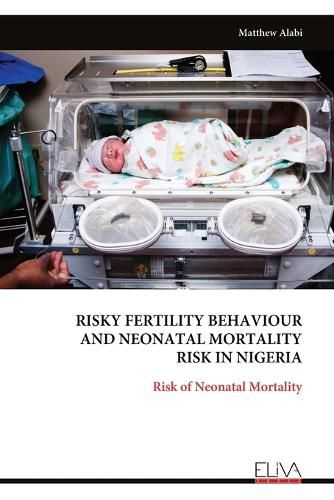Readings Newsletter
Become a Readings Member to make your shopping experience even easier.
Sign in or sign up for free!
You’re not far away from qualifying for FREE standard shipping within Australia
You’ve qualified for FREE standard shipping within Australia
The cart is loading…






Neonatal mortality which refers to the death of a newborn within the first 28 days of life has remained a significant public health concern, especially in low-income countries where the rates remain high. On the other hand, risky fertility behaviour including early childbearing, high parity, and inadequate spacing between pregnancies, has been identified as a major contributing factor to neonatal mortality. Previous studies have found that early childbearing and high parity have been associated with increased risks of preterm birth, low birth weight, and neonatal mortality. Furthermore, inadequate spacing between pregnancies can lead to adverse neonatal outcomes due to maternal depletion and increased risk of complications during pregnancy and childbirth. However, good health-seeking behaviour, antenatal care attendance, facility, and skilled birth delivery no doubt play a crucial role in reducing the risk of neonatal mortality, especially among young mothers.
Hence, in this book, using data from Demographic and Health Surveys (DHS), we explore the correlation between risky fertility behaviour and neonatal mortality rates among adolescent mothers in Northern Nigeria characterized by a high prevalence of early childbirth and poor health-seeking behaviour. Findings from the study reported in this book provide additional evidence linking risky fertility and adverse neonatal outcomes and the mediating effect of good health-seeking behaviour. In part, this book recommends empowering young mothers and promoting healthy pregnancies for a brighter future.
$9.00 standard shipping within Australia
FREE standard shipping within Australia for orders over $100.00
Express & International shipping calculated at checkout
Neonatal mortality which refers to the death of a newborn within the first 28 days of life has remained a significant public health concern, especially in low-income countries where the rates remain high. On the other hand, risky fertility behaviour including early childbearing, high parity, and inadequate spacing between pregnancies, has been identified as a major contributing factor to neonatal mortality. Previous studies have found that early childbearing and high parity have been associated with increased risks of preterm birth, low birth weight, and neonatal mortality. Furthermore, inadequate spacing between pregnancies can lead to adverse neonatal outcomes due to maternal depletion and increased risk of complications during pregnancy and childbirth. However, good health-seeking behaviour, antenatal care attendance, facility, and skilled birth delivery no doubt play a crucial role in reducing the risk of neonatal mortality, especially among young mothers.
Hence, in this book, using data from Demographic and Health Surveys (DHS), we explore the correlation between risky fertility behaviour and neonatal mortality rates among adolescent mothers in Northern Nigeria characterized by a high prevalence of early childbirth and poor health-seeking behaviour. Findings from the study reported in this book provide additional evidence linking risky fertility and adverse neonatal outcomes and the mediating effect of good health-seeking behaviour. In part, this book recommends empowering young mothers and promoting healthy pregnancies for a brighter future.